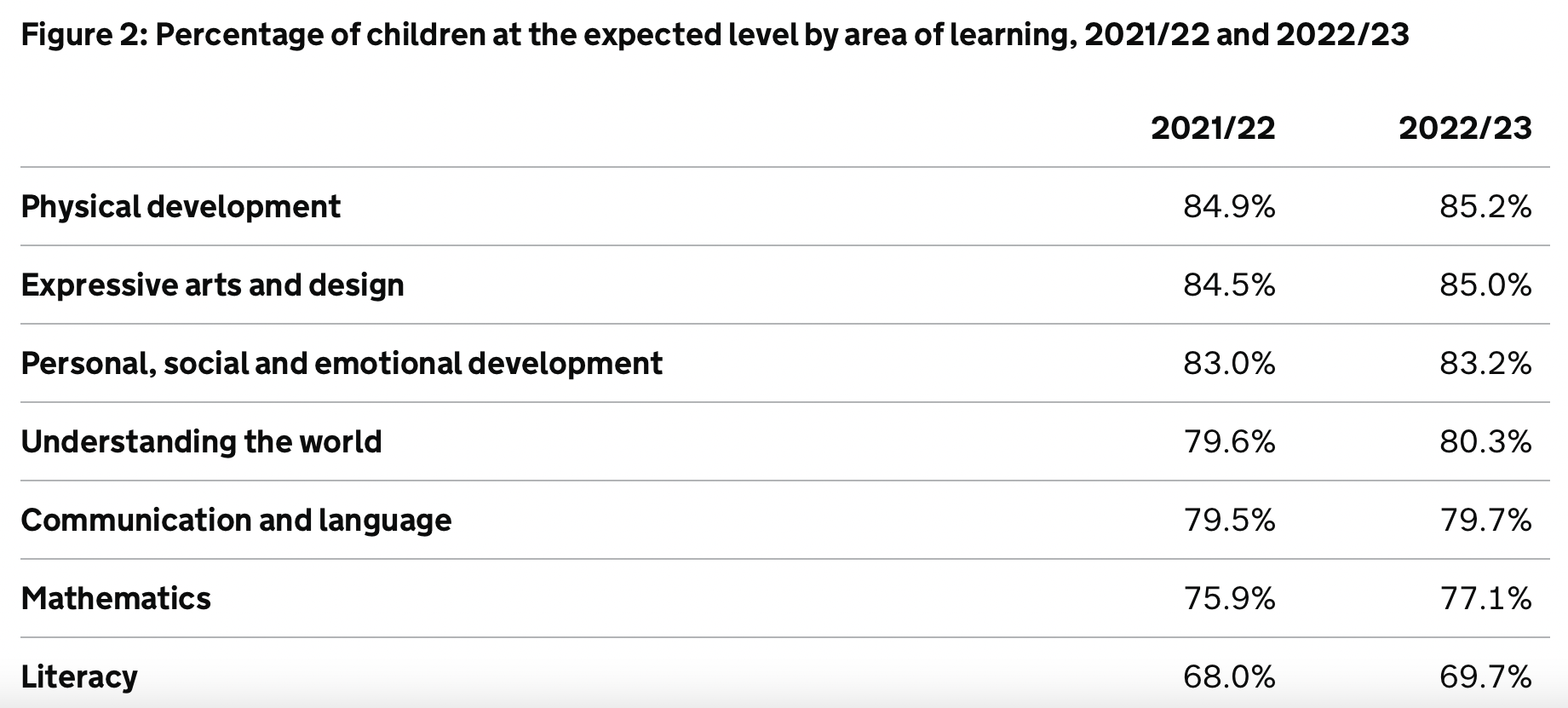
The Department for Education attributed this to signs of ‘gradual recovery from the disruption’ of the pandemic.
According to the annual EYFS Profile figures, which report on teacher assessments of children’s development at the end the academic year children turn five, the percentages of children with a good level of development and at the expected level across all 17 early learning goals have increased by around 2 percentage points in 2022/23.
According to the results, 67.2 per cent of children in England had a good level of development, up from 65.2 per cent in 2021/22; 65.6 per cent of children were at the expected levels across all early learning goals, up from 63.4 per cent in 2021/22.
Disruption to early years provision and family life and the limiting of social contact with peers during the pandemic was likely to have affected the EYFS Profile results for the previous year, the DfE said.
Early years settings were closed to all but vulnerable children and children of critical workers between March and June 2020, when the children taking the EYFS assessment in 2022/23 were approximately two-years-old, and 'many settings will have faced ongoing disruption of varying degrees – for example due to staff absence.'
Social contact with peers was also limited for much of 2020 and some of 2021.
The DfE said rises were also seen over the same period in the most recent phonics and key stage 1 statistics release).
Practitioners are also likely to have greater familiarisation with the new assessment framework, which was introduced in September 2021, according to the DfE, which highlighted a sharp rise in assessment outcomes between 2012/13 and 2013/14 following the EYFS Profile being previously revised at the start of the 2012/13 academic year.
In 2022/23, the average number of early learning goals at the expected level remained at 14.1 per child.
Physical development was still the area of learning with the highest percentage of children at the expected level (85.2 per cent) in 2022/23. However, expressive arts and design was only slightly lower at 85.0 per cent.
Literacy was still the lowest (69.7 per cent) in a pattern unchanged from 2021/22.
Between 2021/22 and 2022/23, the percentage of children at the expected level increased at least slightly (by between 0.2 and 1.7 percentage points) across all seven areas of learning.

Source: Early Years Foundation Stage Profile results: 2022 to 2023
Gross motor skills remains the early learning goal with the highest percentage of children at the expected level (92.1 per cent), while writing was still the lowest (71 per cent).
Compared with a year earlier, all areas of learning and most ELGs increased at least slightly.
Purnima Tanuku, chief executive of the National Day Nurseries Association (NDNA) said that children’s maths and literacy skills were the two areas where children need more support.
‘Today’s results show positive improvements and demonstrate the hard work and dedication of early education and care professionals around the country. It’s clear that they are supporting children’s development and early learning despite the disruption of the pandemic, reports of more children presenting with additional needs and a staffing crisis linked to chronic underfunding.’
NDNA said it is expanding its Maths Champions training programme for practitioners, and is developing a similar programme to support children with their communication and language skills.
- The Early years foundation stage profile results: 2022 - 2023 are available here









